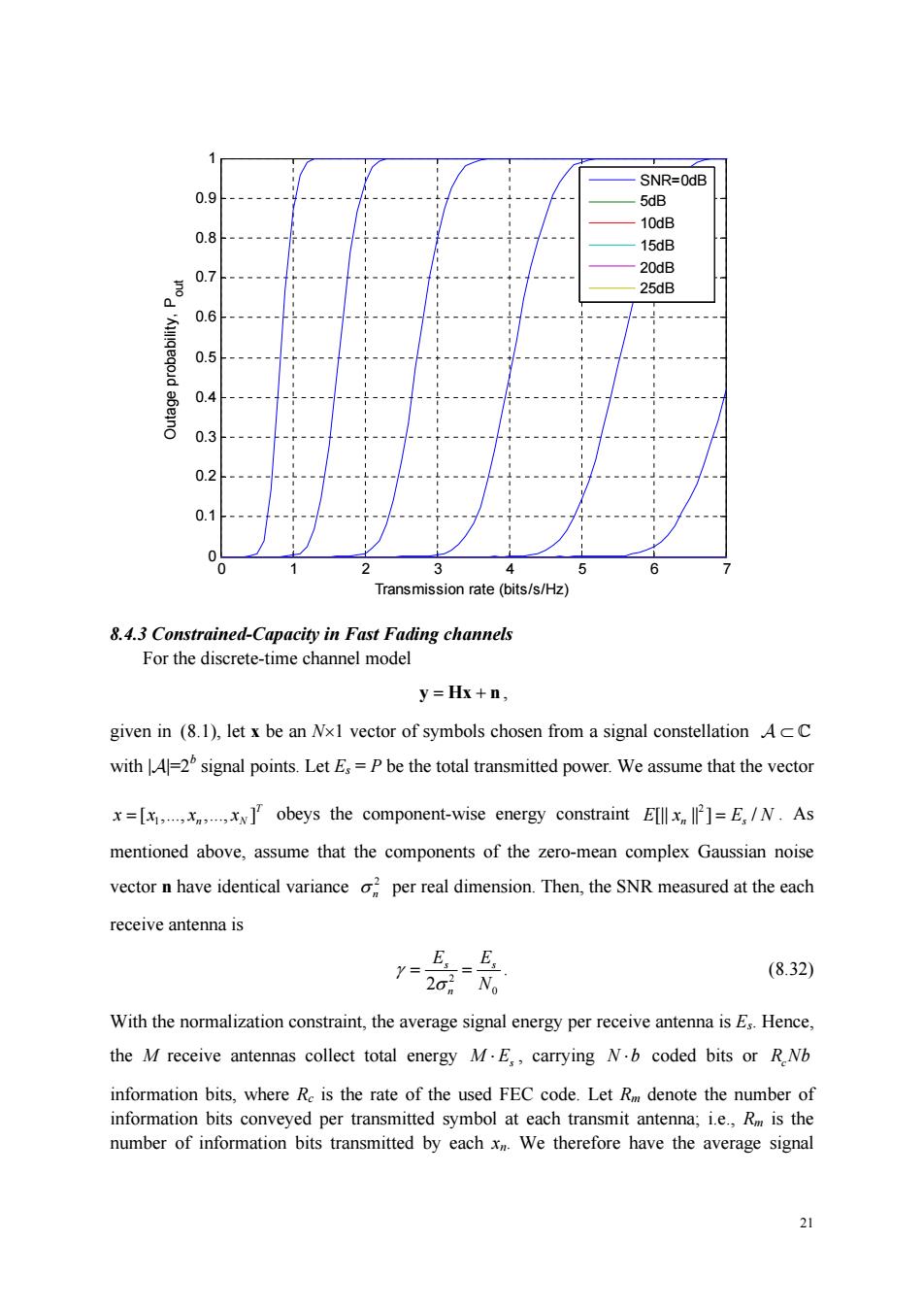正在加载图片...

SNR=0dB 5dB 10dB 0.8 -15dB 0> 20dB 25dB 0.6 0.3 0.2 0.1 00 Transmission rate (bits/s/Hz) 8.4.3 Constrained-Capacity in Fast Fading channels For the discrete-time channel model y=Hx+n, given in (8.1).let x be an NxI vector of symbols chosen from a signal constellation AC with Asignal points.Let E,=P be the total transmitted power.We assume that the vector x=[x obeys the component-wise energy constraint Elllx]=E,/N.As mentioned above,assume that the components of the zero-mean complex Gaussian noise vector n have identical variance per real dimension.Then,the SNR measured at the each receive antenna is E =2 (8.32) With the normalization constraint,the average signal energy per receive antenna is E.Hence, the M receive antennas collect total energy M.E,carrying N.b coded bits or R.Nb information bits,where R is the rate of the used FEC code.Let R denote the number of information bits conveyed per transmitted symbol at each transmit antenna;i.e.,Rm is the number of information bits transmitted by each x.We therefore have the average signal 21 21 0 1 2 3 4 5 6 7 0 0.1 0.2 0.3 0.4 0.5 0.6 0.7 0.8 0.9 1 Transmission rate (bits/s/Hz) Outage probability, Pout SNR=0dB 5dB 10dB 15dB 20dB 25dB 8.4.3 Constrained-Capacity in Fast Fading channels For the discrete-time channel model y Hx n , given in (8.1), let x be an N1 vector of symbols chosen from a signal constellation with ||=2b signal points. Let Es = P be the total transmitted power. We assume that the vector 1 [ ,., ,., ]T n N x xxx obeys the component-wise energy constraint 2 [|| || ] / E n s x EN . As mentioned above, assume that the components of the zero-mean complex Gaussian noise vector n have identical variance 2 n per real dimension. Then, the SNR measured at the each receive antenna is 2 0 2 s s n E E N . (8.32) With the normalization constraint, the average signal energy per receive antenna is Es. Hence, the M receive antennas collect total energy M Es , carrying N b coded bits or RcNb information bits, where Rc is the rate of the used FEC code. Let Rm denote the number of information bits conveyed per transmitted symbol at each transmit antenna; i.e., Rm is the number of information bits transmitted by each xn. We therefore have the average signal